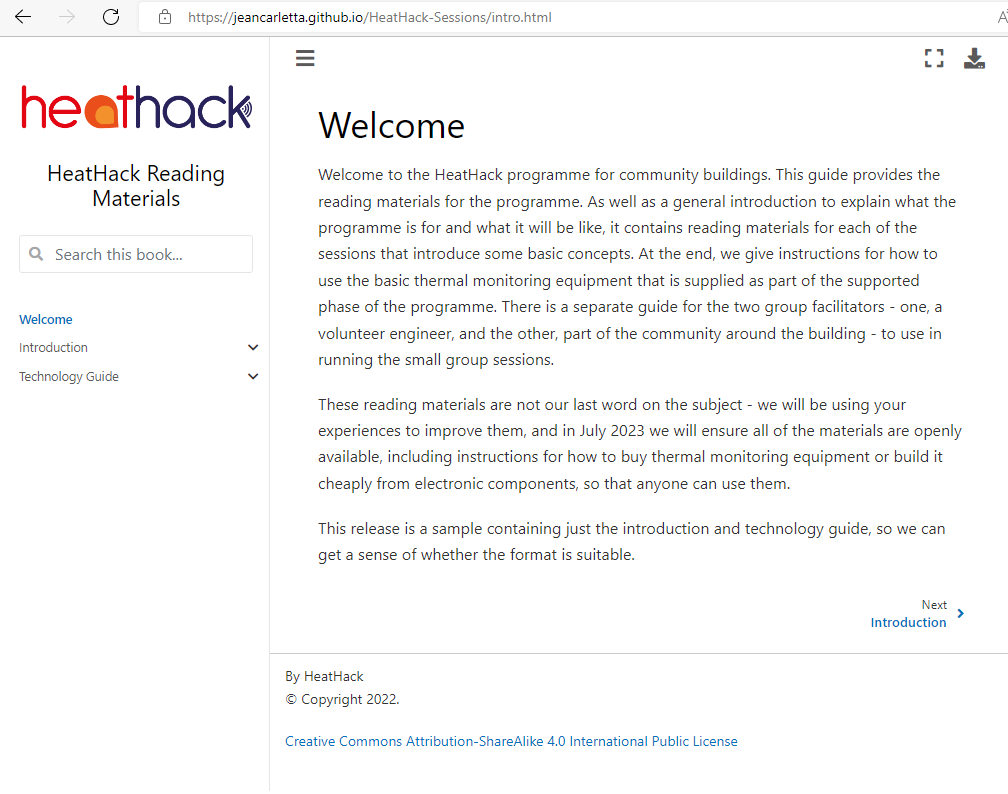We’ve been thinking about what reading materials to provide to the groups and engineers involved in the programme. There are lots of resources available on-line. We don’t want to reinvent the wheel, but they are scattered, and many of them assume too much background knowledge in how buildings work. We’ve been writing basic material that conveys the concepts people need to know, and then points elsewhere for more information.
It’s very important to us that community groups find the material easy to understand and read. Simple wording and clear layouts are an important part of that.

We’re trying an unusual approach – Jupyter Book. It will break the reading into lots of linked web pages, and let us generate graphs to include automatically. It can also be used to create PDFs for those without internet, and probably other formats as well. What we have so far isn’t perfect, especially how the PDFs handle images. On the web pages, clicking on them will make them large enough to see properly. This isn’t true of the PDF yet. We’ve just released our first samples – of the introduction and the guide to using our thermal monitors – to see what people think of them. It’s a bit fiddly to improve the PDFs, but we think we can. We may also be able to create some standard accessible formats from our web pages, but we haven’t tried it yet.
Here are some links to the samples – are they usable? What else should we worry about?
- Welcome — HeatHack Reading Materials (jeancarletta.github.io)
- PDF created by one method
- PDF created by a second method
“Book” by Kamil Porembiński is licensed under CC BY-SA 2.0.
